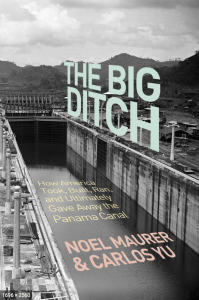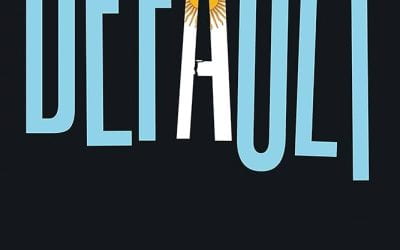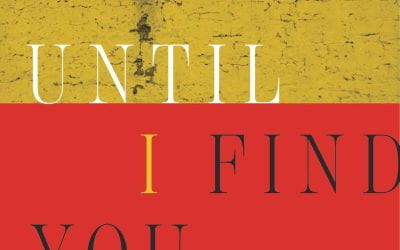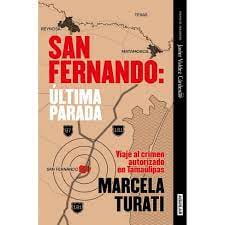A Review of The Big Ditch: How America Took, Built, Ran and Ultimately Gave Away the Panama Canal
 The Big Ditch: How America Took, Built, Ran and Ultimately Gave Away the Panama Canal, by Noel Maurer and Carlos Yu (Princeton University Press, 2011, 420 pages.)
The Big Ditch: How America Took, Built, Ran and Ultimately Gave Away the Panama Canal, by Noel Maurer and Carlos Yu (Princeton University Press, 2011, 420 pages.)
“The creation of the Panama Canal was far more than a vast, unprecedented feat of engineering. It was a profoundly important historic event and a sweeping human drama not unlike that of a war. Apart from wars, it represented the largest, most costly single effort ever before mounted anywhere on earth.”
—David McCullough, The Path Between the Seas: The Creation of the Panama Canal 1870-1914. New York: Simon and Schuster, 1977.
It was a question lingering for a century among most Panamanians and many Americans: was the Panama Canal good business for the Americans? There was a military-strategic gain but economically, did the money invested yield a good return as a commercial enterprise and if so, how profitable was it?
Harvard Business School professor Noel Maurer and historian Carlos Yu reflect on the economics of a very singular case of American imperialism: from Theodore Roosevelt’s involvement with Panama’s Revolution at the turn of the 20th century to the establishment of a singular colonial enclave in the Panama Canal Zone and the handover of the Panama Canal itself to independent Panama in 1999.
The authors’ quest is unequivocal: whether a democratic nation like the United States “operating inside the strictures of Westphalian sovereignty, was able to leverage its ability to impose military and economic sanctions into sustainable economic gains.” Furthermore, why did the United States withdraw from its “imperial commitment” almost a century later?
Panama’s destiny has always been linked to its privileged geographic location. Centuries before Roosevelt’s endeavor, the Spanish Empire was very much aware of the strategic importance of this possession.
After Vasco Nuñez de Balboa discovered the Pacific (originally named “The Sea of the South”) by crossing the thinnest stretch of land—only 50 miles one ocean from the other—in 1503, the city of Panama was established as the first European settlement on the Pacific coast. Ever since, Europeans first, and Americans later expropriated most of the rents generated by Panama’s geography by different means.
The book presents deep research and analysis on the social rate of return, as well as military and economic impacts of the American “imperial” adventure on the Isthmus of Panama, not without paying proper attention to colonial times, to previous U.S. private investment in the first intercontinental railroad built in order to capture traffic from the East Coast to California during the Gold Rush, and to the French failed project of building a sea-level ditch in the 19th century.
For Maurer and Yu the cost of America’s venture on Panamanian soil was small compared to the benefits obtained. It took ten years to build at a final cost of $326 million (with an overrun of more than double of the original estimate of $144 million). The project was not only a great investment but the United States became the main beneficiary of the “path between the seas” (as David McCullough called it).
It is well known that the Americans invoiced the new republic dearly for their backing of Panama’s revolution against Colombia. “Not only did the United States reduce its payments for the use of Panama’s geographic assets, it succeeded in getting Panamanian taxpayers to subsidize some of the overhead costs of canal construction and operation. In other words, contrary to a large literature on the wages of the empire, Theodore Roosevelt managed to make imperialism pay.”
The authors found out, for example, that the net present value of the Canal Treaty signed between the United States and Panama (the Hay-Bunau Varilla Treaty) was less than a half the value of the agreement previously signed between the United States and Colombia (while Panama was still part of that nation), a treaty to which the United States had already agreed two years before.
The use of military muscle by the United States in favor of the new republic yielded a significant additional return: in 2009 dollars, the authors estimate the United States profited between 10 to 32 billion dollars from the initial arrangement, an amount that would have been astronomically higher if the Canal would have raised tolls as a commercial operation (the United States did not rise canal tolls until 1974 as a result of strategic policy of keeping a revenue-neutral operation).
“Digging the Ditch” is a chapter devoted to remind readers once more of the odyssey and marvels that American engineers achieved over highly demanding technological challenges in the disease-infested tropical isthmus between 1904 and 1914.
“The American military epidemiologist William Gorgas ran the single largest tropical public health effort in history until that date so that the labor force building the Panama Canal would not be decimated by disease, as it had during the private French attempt”.
The dark side of the construction story was the importation of the Jim Crow system of racial discrimination, a legacy that reigned in the former Panama Canal Zone for most of the 20th century.
Chief Engineer George Goethals, the Panama Canal Zone’s first governor, “was blunt about his motives” for keeping the Caribbean black population—brought from the West Indies precisely to build the Canal outside of the territory of the Canal Zone. “I did not care to see a population of Panamanians or West Indian negroes occupying the land”—he wrote in 1915—“for these are non-productive, thriftless and indolent. They would congregate in small settlements, and the cost of sanitation and government would be increased materially.”
As for tangible economic impact, according to Maurer and Yu, U.S. producers, consumers and transporters were the main beneficiaries of the cost savings produced by shortening the distance between ports.
They also found that California and the Pacific Northwest benefited at the expense of the South.
Outside the United States, the other two countries profiting significantly from the Panama Canal happened to be Chile (minerals exports) and Japan (shipping industry and commerce).
After World War II the Canal started to show signs of stagnation and decline. The authors even found enough evidence to conclude that the American “managed the canal particularly poorly during the postwar period.”
In the late 1970s, when President Jimmy Carter finally accepted to renegotiate the treaties—at significant political cost to himself—the Panama Canal was already a relatively inefficient enterprise. “The canal’s American managers lacked incentives to increase its efficiency, market its services, or adopt new technologies.”
Upper management consisted of military bureaucrats “at the end of their careers, given a plum job as reward before retirement.” By 1979, the Panama Canal was barely making money.
With a remarkable accumulation of research and economic history it is a pity that some basic historical facts were not accurate. The inaccuracy will not, in my opinion, change the main theme or any of the supporting arguments presented by the authors. Any Panamanian, however, will be taken aback by any text asserting that “on November 6, 1903, Panama declared its Independence.” Panama’s Independence Day is November 3. Other minor historical typos run along Panama’s turbulent political history, all the way to General Manuel Noriega regime, a figure nicknamed by his countrymen “Cara de Piña” (Pineapple Face), and not “La Piña” (The Pineapple) as the book indicates repeatedly.
The transfer of the Panama Canal administration from the United States to Panama has a happy ending. For the United States, the Panama Canal “in Panamanians hands became more valuable to the United States than the Panama Canal in American hands” concluded the authors.
For Panamanians, the peaceful transition from the original “Imperialistic Power of the North” to the small nation in Central America has been a source of economic and psychological accomplishment.
“Once Panama took back ownership of the canal, the waterway became phenomenally profitable despite the growth of alternative transport routes and fueled a prolonged economic boom after decades of stagnation and relative decline.”
Maurer and Yu are not shy about their optimistic outlook on the future of the Big Ditch. “The Panama Canal entered the twenty-first century better managed than ever before in its history.” No weak endorsement from two well versed scholars.
Fernando Berguido is the editor of La Prensa in Panama and a 2011 Fellow at the Nieman Foundation for Journalism at Harvard University. Before heading Panama’s leading newspaper, Berguido practiced law and lectured Constitutional Law at University Santa Maria La Antigua School of Law.
Related Articles
A Review of Default: The Landmark Court Battle over Argentina’s $100 Billion Debt Restructuring
In February 2019, I found myself serving as the special attorney general for the then newly recognized interim government of Venezuela, tasked with addressing more than 50 claims before the U.S. courts stemming from the $140 billion debt inherited from Hugo Chávez and Nicolás Maduro.
A Review of Until I Find You: Disappeared Children and Coercive Adoptions in Guatemala
A student in my “Introduction to Cultural Anthropology” course at the University of Delaware approached me several weeks ago, after hearing about my long-term research in Guatemalan communities, to tell me that they were born there, in Guatemala.
A Review of San Fernando: Última Parada, Viaje al crimen autorizado en Tamaulipas
One of Mexico’s best investigative journalists, Marcela Turati, takes readers to terrorized and traumatized San Fernando, a town known for dozens of mass graves, and exposes the depths of criminal brutality and official corruption that hid the bodies and the truth for years.




